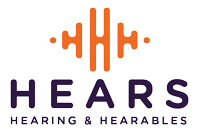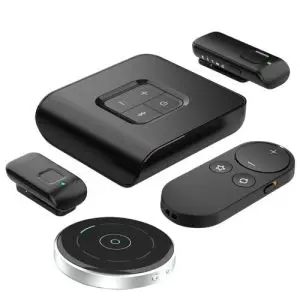Before I attempt to review the latest on Bluetooth (5.3) and the book that Nick Hunn just released from the Bluetooth Special Interest Group (SIG), I want to review how hearing aids currently are connecting to stream audio from a phone.
In 2014 Apple’s iPhone created its own proprietary Low Energy Bluetooth for hearing aids. The Bluetooth used was not directly Bluetooth but a Low Energy (LE) Bluetooth which was created a few years before that. Hearing aid manufacturers had to pay to get the license to use it.
The top 6 manufacturer brands that use Apple’s proprietary low-energy Bluetooth are GnResound, Signia, Widex, Starkey, and Oticon. The Phonak brand does not use low-energy Bluetooth and hence, did not buy into Apple’s proprietary low-energy use. More on Phonak’s connection is below.
I really cannot even tell you how many people I have helped pair to the Bluetooth and more to the iPhone, but I can tell you that it is getting easier and that the hearing aids are holding and keeping their pairing better now than they were back in the day.
To pair to the iPhone, one must go into the settings, into the accessibility, find the (made for iPhones) MFI, open and close the hearing aid battery door and search. Soon the hearing aids would “show” and were able to be paired. There have been many updates with the iPhone and now the “MFI” is replaced with just “hearing aids” .😊 There is a lot behind the scenes with how the Bluetooth streaming actually works with both aids but it is very technical and if you are interested in the technical components, you too may want to refer to the Bluetooth book by Nick Hunn and the Special Interest Group. I digress.
Let’s talk about Android phones now.
Since android phones did not have a proprietary formula yet, Gn Resound started working with Google to create their own connections as the Bluetooth Special Interest group wasn’t moving at the speed at which Google and Resound wanted. And finally, with the updated 5.0 Bluetooth release, Google now has audio streaming for hearing aids referred to as ASHA.
The hearing aid brands that now connect to Android’s ASHA are GnResound, Signia, Starkey, and Widex. Oticon still does not have the ability at this moment to connect to an Android. Perhaps the Oticon brand will be able to connect soon. And remember Phonak brand does something different as I will explain next.
Phonak brand back in 2017-18 created their own chip that they call Sonova Wireless One Radio Digital Chip (SWORD), now on 3.0. As we mentioned they were able to avoid paying iPhone license fees and connect to Bluetooth directly, not using the Low Energy Bluetooth. They do claim that their Bluetooth chip runs on a lower battery drain compared to a regular Bluetooth connection. The Phonak brand was also able to use a microphone so people could truly talk on the phone hands-free. Like the other technology, there is the technology behind the scenes of streaming the signal to the other aid as Bluetooth only allows unilateral pairing to only one aid. Please refer to the Phonak brand papers to read more of the details or reach out to us at Hears Hearing & Hearables for a copy.
Low-energy Bluetooth 5.3:
Bluetooth 5.3, introduced by the Bluetooth Special Interest Group (SIG) in July 2021, is an incremental yet important upgrade over Bluetooth 5.2. While both versions support LE Audio and the LC3 codec for high-quality, low-bitrate sound, Bluetooth 5.3 brings several refinements that improve efficiency, stability, and device responsiveness. One key enhancement is in periodic advertising, where 5.3 reduces unnecessary radio activity, helping devices like earbuds or fitness trackers conserve battery life and transfer data more efficiently. It also improves channel classification by enabling devices to automatically evaluate and avoid congested RF channels, resulting in more stable connections in crowded environments such as airports or offices.
Another notable improvement in Bluetooth 5.3 is the addition of subrated connections, which allow devices to maintain low-latency communication with less frequent data exchange. This is particularly beneficial for use cases like gaming or hearing aids, where quick response times are essential but constant streaming is not. Furthermore, 5.3 introduces enhanced encryption key size control, offering stronger security by allowing devices to enforce minimum key sizes. Bluetooth 5.3 began appearing in consumer devices in late 2021 to early 2022 and has since been adopted in smartphones, laptops, wireless audio devices, and wearables. Overall, it builds on the capabilities of 5.2 by refining energy use, connection stability, and performance for modern wireless needs.
We will keep you posted as we progress to more updated versions of Bluetooth!
Cheers! Kim





